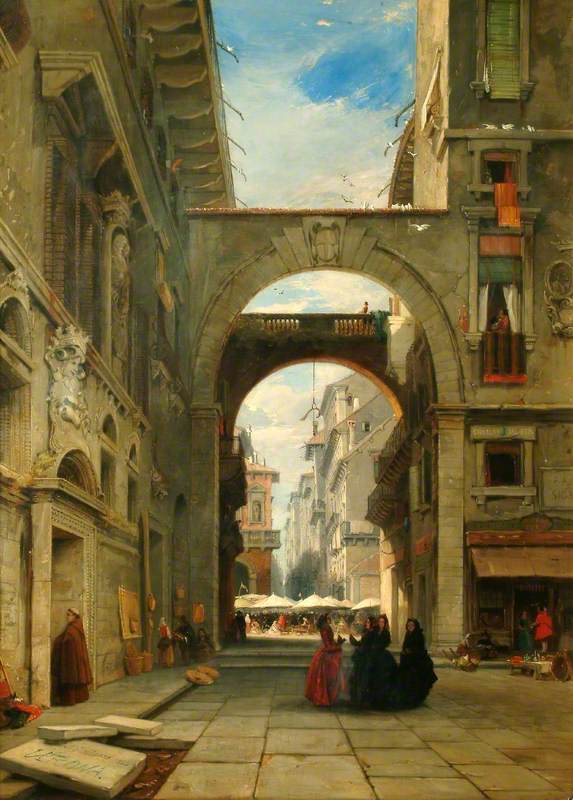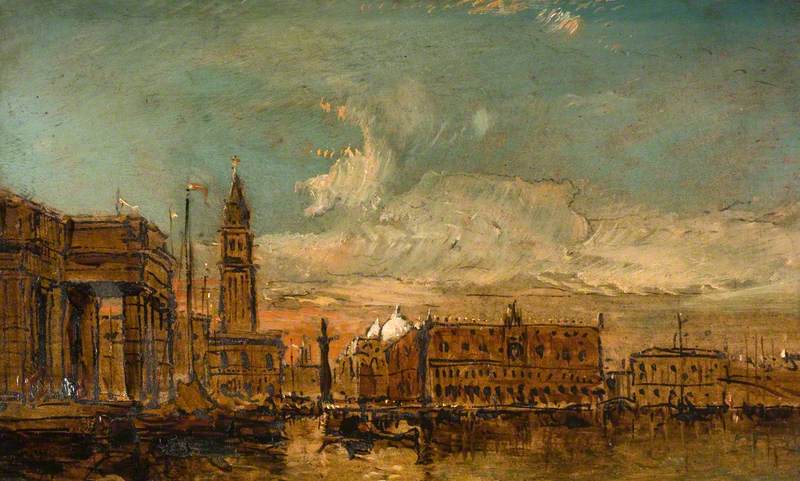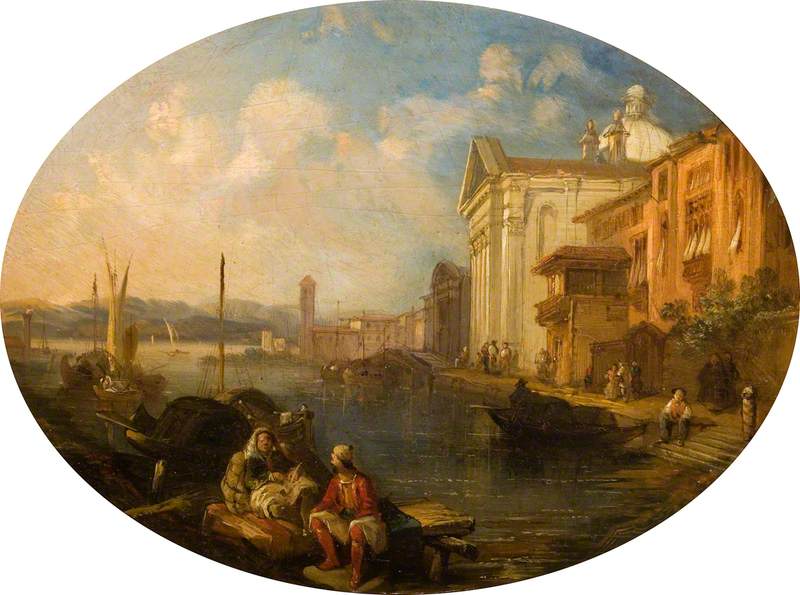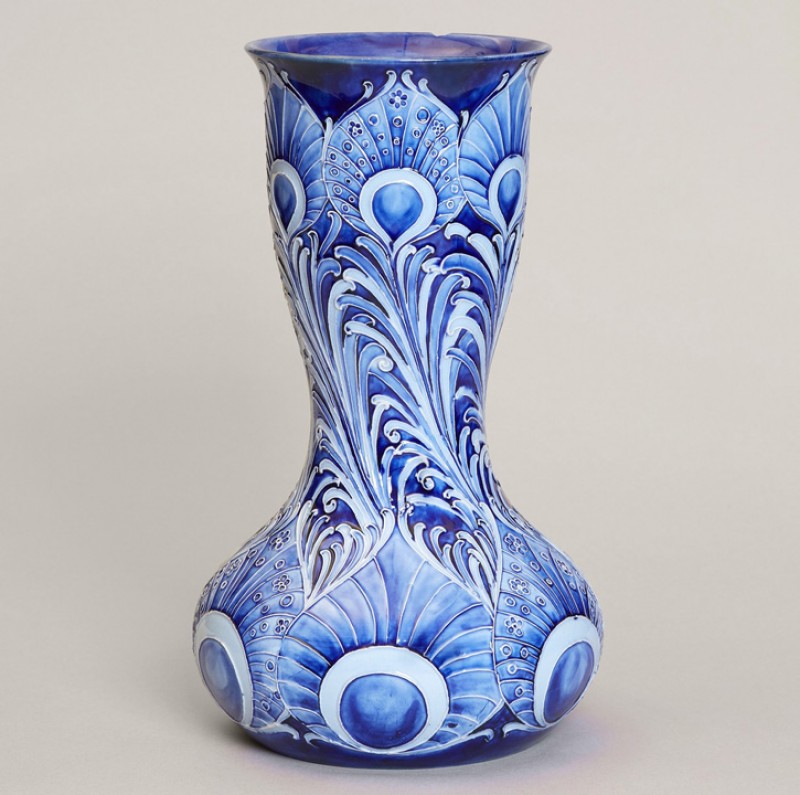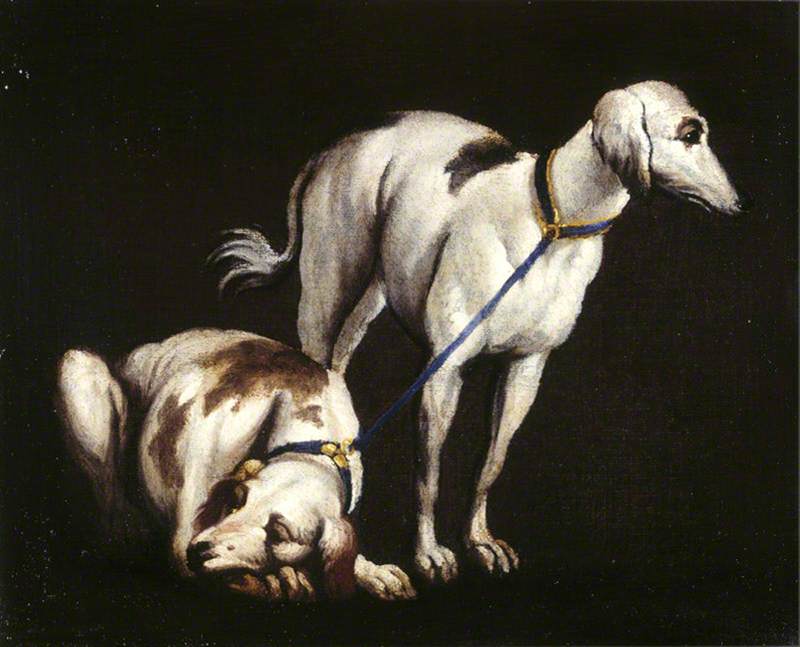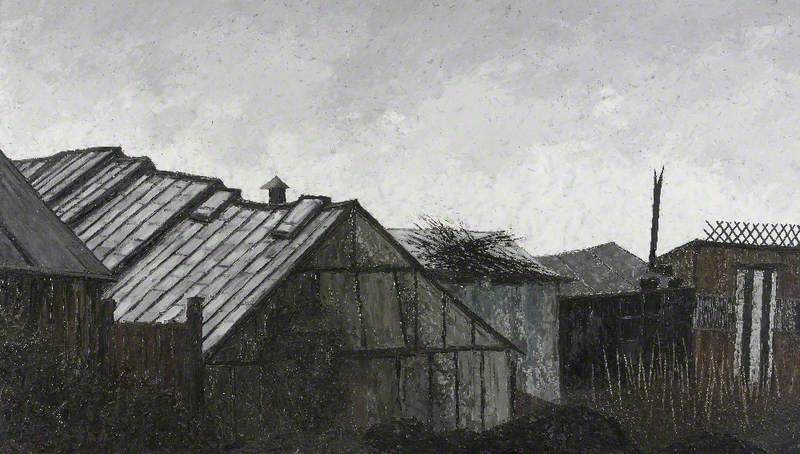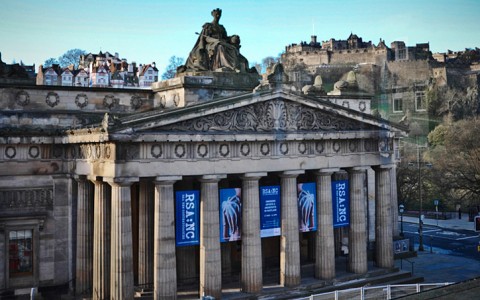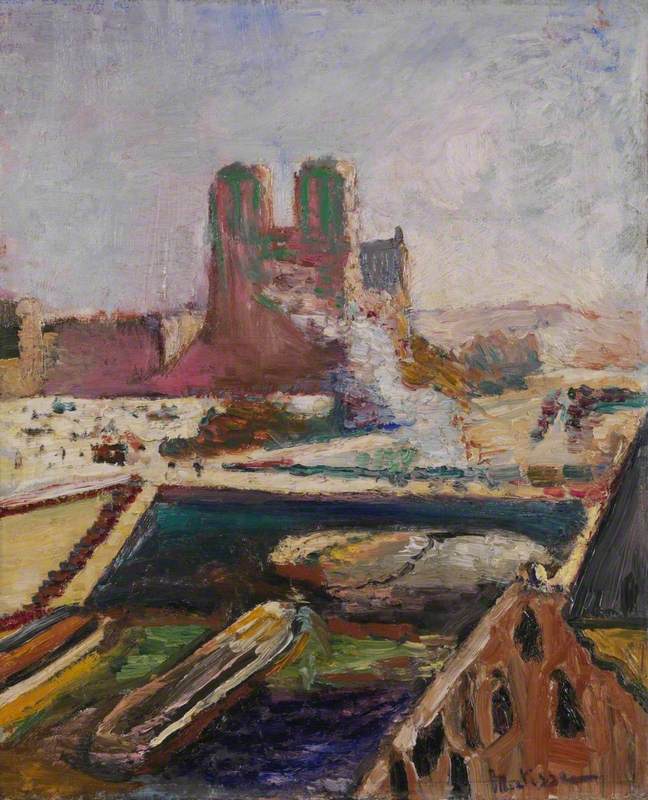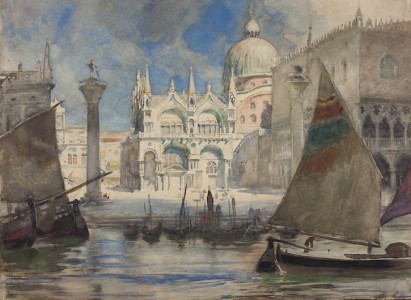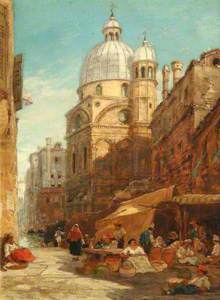James Holland (1799–1870) was one of the most talented and versatile painters of his generation. Born in Burslem – one of the six towns in North Staffordshire collectively known as 'The Potteries' – Holland began his career at an early age as a painter on porcelain. When he was only 19, he left for London to pursue a professional career as an artist.
It was not long before Holland's work received critical acclaim, and he became regarded as one of the finest artists of the English school. He exhibited at the Royal Academy, the Society of British Artists, the British Institution, and the Royal Watercolour Society. His prolific artistic output over the course of a long career included landscapes, architecture and marine subjects, and book illustrations. Steve Bond's biography of the artist, James Holland: Forgotten Artist (1999) highlights the remarkable number of Holland's works held by no less than 47 national and regional collections across the UK and overseas.
Although an exceptional watercolourist, Holland was equally talented in oils – this is reflected in The Potteries Museum & Art Gallery's holdings of over 40 works by the artist, which are divided almost equally between oil paintings and watercolours. After establishing his name as a watercolour artist, by the late 1820s Holland was also producing works in oil paint. He made numerous trips around the British Isles.
His Welsh landscape painting, Llangollen, demonstrates his skill in oils in his response to the impressive kinetic energy of a waterfall on the River Dee, Llangollen.
Holland was also adept at capturing popular modern-life scenes. This shines through in his oil painting of the annual May fair in the East Midlands market town of Boston, Catching the Pig at Boston Fair, which has all the elements of a busy day at the fair of the period. In particular, Holland's bustling crowd scene illustrates the excitement (and a little chaos) of the event as contestants try to capture the pig, which was often greased to be extra slippery. The winner got to keep the pig!
From the early 1830s onwards Holland undertook extensive tours on the Continent where he made many studies of France, the Netherlands, Switzerland, Portugal and Venice. These works are especially characterised by his use of vibrant colour and dramatic light effects, and they are widely regarded as being amongst his most accomplished.
Venice in particular was a frequent stop in Holland's tour itineraries: over the course of his career he made at least 18 visits to the city during his travels through Europe. Holland, who had grown up in the grime of the smoky Potteries town of Burslem, must have been enchanted by the atmospheric light of Venice. The luminosity of light effects upon the water and architecture is evident throughout his Venetian views.
Wherever we look, his depiction of the light emanating from the sky also plays a vital role in defining the buildings, around and along the Venetian canals, and the figures that often populate the scenes both in the foreground and further away.
However, despite his talent and artistic output, Holland's reputation seems to have faded rapidly after his death. As an artist whose work arguably bridges Romanticism and Impressionism, he undoubtedly deserves more recognition today.
More of Holland's oil paintings can be found on Art UK's Potteries Museum & Art Gallery collections page and are included in a selection of over 300 of the most popular paintings from our fantastic fine art collection which can be purchased as beautiful art prints from our online Art UK shop. The proceeds from every purchase go back to The Potteries Museum & Art Gallery to help care for our collections.
Samantha Howard, curator, The Potteries Museum & Art Gallery

